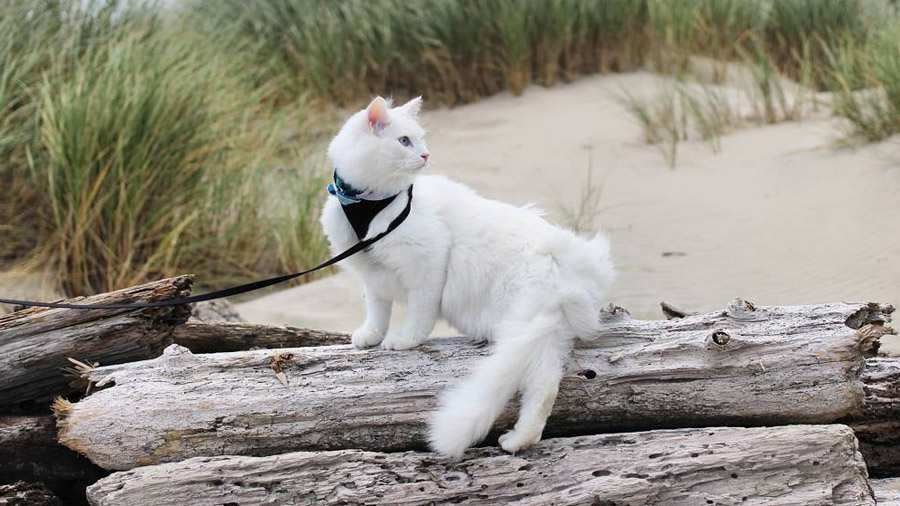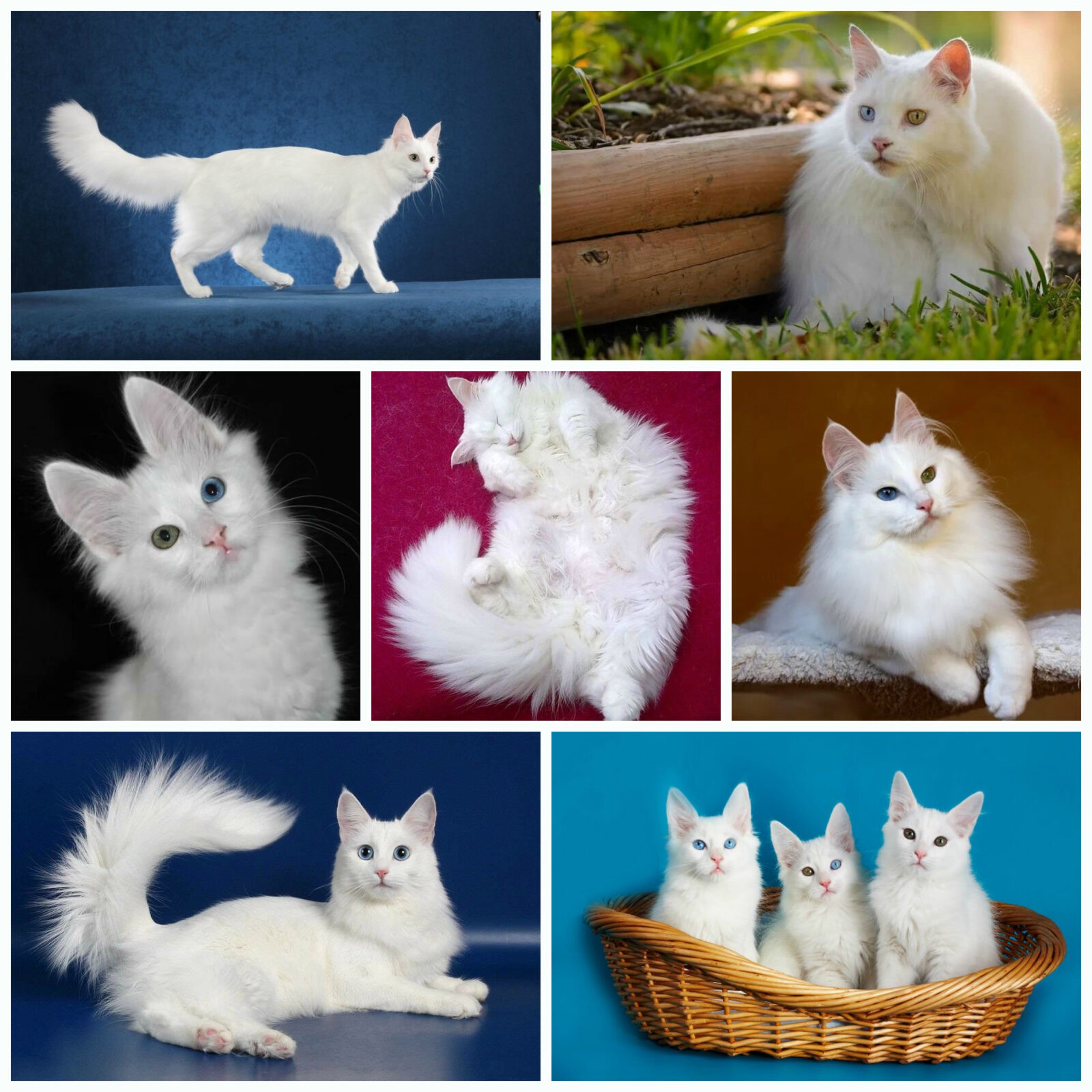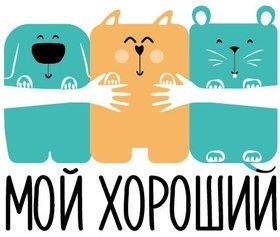
Brief description of the breed
The body of Turkish cats is muscular, the legs are long, the hind legs are slightly longer than the front ones. But the paws are very small, rounded and graceful, often with the presence of tufts of wool between the fingers. The long tail of the angora tapers to a narrow tip.
Turkish beauty cats emphasizes the wedge-shaped head of medium size, crowned with large, high-set ears, on which you can not miss the bizarre tufts.
Expressive almond-shaped eyes complete the incredible image of the Turkish Angora. Their color can be varied: blue, green, golden, amber, multi-colored (each eye is a different color).
Turkish Angoras can be small or medium in size, and their weight, on average, can vary from two to four kilograms. The average life expectancy is about eighteen years.
Beautiful and elegant Turkish cat Angoras often surprise their owners with their extraordinary intelligence and athleticism. For cats of this breed, there are practically no barriers. They can climb even the tallest closet in the house. Family members will also have to be extremely careful when closing interior doors, as they are among the favorite places for Angora cats to hang out. Care must be taken not to pinch your pet's paws.
Although Turkish cats, as they are sometimes called, can be distinguished by excellent manners, they can be overly active and agile. Pets of this breed love interesting, active games. They will do everything possible to focus the attention of others on themselves, even if this causes irritation or even resentment among family members.
basic information
| Breed name: | Turkish angora |
| Country of origin: | Turkey |
| The time of the birth of the breed: | 1973 |
| The weight: | 4 - 7 kg |
|
EMS code:
|
TUA |
| Life Expectancy: | 16 - 18 years old |
| Kitten price: | 100 – 200 $ |
| Most popular nicknames: | list of nicknames for turkish angoras |
Assessment of breed characteristics
|
Adaptability
(A definition that means how easily a cat can adapt to changes in life)
|
🐱🐱🐱🐱🐱 |
|
Shedding level
(Level and frequency of hair loss in the animal)
|
🐱🐱 |
|
Tenderness level
(The level and amount of tenderness and affection that the cat gives in return for attention to itself)
|
🐱🐱🐱🐱🐱 |
|
Social need
(The required number of contacts of a cat with other animals, as well as people)
|
🐱🐱🐱🐱🐱 |
|
Grooming
(The number of bathing, brushing, and the number of professional grooming sessions required for the cat)
|
🐱🐱 |
|
Friendliness in an unfamiliar environment
(Features of the cat's behavior in a society with strangers or in an unfamiliar environment)
|
🐱🐱🐱🐱🐱 |
|
Health issues
(Potential health status of a cat)
|
🐱🐱 |
|
Intelligence
(The ability of a cat to think and solve emerging difficulties)
|
🐱🐱🐱🐱🐱 |
|
Friendliness to children
(A factor that determines how friendly a cat is to children, whether she likes to play with them and tolerate some childish pranks)
|
🐱🐱🐱🐱 |
|
Game activity
(The concept is determined by its very name, and, as a rule, is found in almost all cats)
|
🐱🐱🐱🐱🐱 |
|
Dog friendly
(The cat's tendency to get along with dog)
|
🐱🐱🐱🐱🐱 |
Turkish Angora cat photo:

History of the Turkish Angora cat
The long-haired Angora cat is not the source for the famous angora sweaters, as some might think when they hear such a familiar, at first glance, word. Although the softness of their wool can be compared to delicate angora sweaters. The breed got its name thanks to the Turkish capital, Ankara, which was previously known as Angora.
For many centuries, the Turkish Angora cat has been a kind of souvenir for invaders and just foreigners visiting this country. Some suggest that the Angora cat was the first long-haired cat in modern Europe, brought here by the Vikings over a millennium ago. Over time, the population of cats of this breed began to decline rapidly. The breed was saved only thanks to a special breeding program launched at the Ankara Zoo.
The Turkish Angora came to the United States in 1954. Breeders immediately became interested in the breed, but it was not recognized until the sixties of the last century. The Cat Fanciers Association registered the breed in 1968, and the full recognition of the Turkish Angora occurred in 1972. But as for the multi-colored cats of this breed, they were recognized only in 1978. Note that today this breed is still not recognized by most North American associations.
Turkish angora cat character
Turkish Angoras retain incredible playfulness and activity even at a fairly mature age. They are quite friendly to guests and other strangers and have incredible love for their loved ones. Cats of this breed are very sociable, so it is best to acquire this angora if there is another kitten in the house or dog. In this case, your pet will never get bored and will always be in the company of a friend.
When you are at home, the angora will gladly climb onto your shoulders or knees to spend a few minutes there. But at night, most likely, the Angora cat will choose a warm place in your bed.
In order for your life and the life of your pet to be interesting and cause only positive emotions, you need to have a good sense of humor and unlimited patience. If you are not ready for such conditions, then it is better to postpone the purchase of an Angora or even abandon the idea of keeping a pet of this breed.
If the Angora cat is up to something, it is very difficult to get her not to do it. The Turkish Angora cat is an affectionate, gentle pet, devoted to its family and distinguished by perseverance, incredible activity, intelligence, the desire to communicate with others and an insane desire to be in the spotlight.
Maintenance and care
Due to the fact that the Turkish Angora has no undercoat, its coat is single-layered. Therefore, the pet does not have pellets on the wool and it is quite easy to care for it. Just weekly brushing is enough. It's also nice that the Turkish cat not prone to heavy shedding. The coat reaches its full length only by the age of two.
Brushing your teeth is an essential weekly routine. This will help prevent periodontal and other dental problems in your pet. Nail trimming should also be included in the weekly routine, although some cats they grind naturally.
Do not forget about the eyes, the corners of which should be wiped every week with a damp cloth to remove all possible secretions. To prevent possible infection, it is best to use a separate wipe for each eye.
Particular attention is paid to the ears. Every week they should be carefully inspected for infections, dirt and irritation. The auricles are best treated with special wipes moistened with a solution prescribed by a veterinarian. But you can also take a solution of vinegar and water in a 1: 1 ratio. Avoid using cotton swabs when cleaning the ear canals.
A clean tray will not only avoid infectious diseases, but will also be a condition for the absence of an unpleasant smell in the house. You must be careful not to allow your pet to walk on the street unattended. Firstly, you will prevent uncontrolled contact of the pet with yard animals, and secondly, you will be sure that your pet will not get hit by a car or become a victim of a thief.
Representatives of this breed adore children, especially love to play with them. Therefore, they are perfect for families with small children. It is better not to leave small children unattended. They can pull the animal by the fur and hurt him, in turn, the cat can inadvertently scratch the child.
Angoras get along well with other pets. If there are pets in your house, except for the Turkish cat itself, then it is necessary to carry out early socialization and accustom the animals to living together.
Health and disease
Turkish angora cats can be classified as conditionally healthy cats, distinguished by a long life, but they also have characteristic diseases. White Angoras with one or two bright blue eyes often have hearing problems or complete deafness of one or both ears at once.
Ataxia is a neuromuscular disease. It leads to the death of the animal. The disease affects mainly small children. kittens at the age of two weeks to a month. Conducting detailed screening can significantly reduce the likelihood of disease in offspring and already born kittens.
Hypertrophic cardiomyopathy is one of the types of cardiac pathology that leads to a change in the heart muscle. This disease is equally common in both purebred and yard cats. Turkish Angoras are prone to the occurrence of the mentioned disease, like no other cat breed.
Some interesting facts
- The name of the breed arose thanks to the capital of Turkey - Ankara, which was once called "Angora".
- Turkish cats are very easy to care for.
- Angora is suitable for active families.
- Cats of this breed get along with dogs.
- Turkish cats are prone to cardiac problems.
Nurseries and breeders
We borrowed material from the wonderful site of our partners DOGCATFAN.COM about cats and dogs, the author dogcatfan
